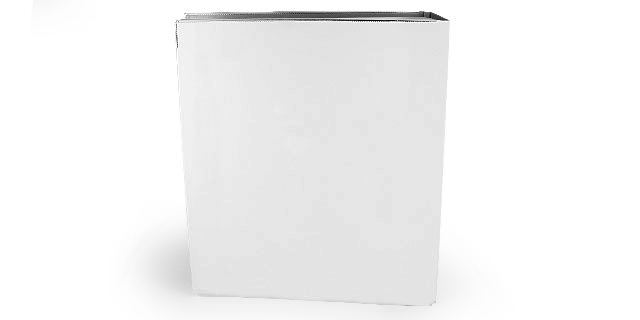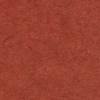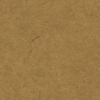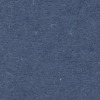Reprise is an earth-friendly 100% recycled fiber stock.
Foil Stamping and Embossing:
Copper or brass dies are recommended. Reprise accommodates both metallic and pigment foils. Foils with a looser release are recommended (API foils with GR, GL, KK, PMV releases have worked well).
Reprise yields excellent results with embossing.
Die cutting:
Reprise is well suited to die cutting. Consult your die cutter regarding specific artwork.
Gluing:
Reprise is receptive to most common types of adhesives. Consult your glue manufacturer.
Offset Printing:
Select 100% oxidizing inks with good rub resistance. We recommend using a 50-52 micron spray powder. Adjust the micron size to match ink coverage. Lift heights should be adjusted based on ink coverage; 100-500 sheet stack is suggested as a starting point. Large areas of solid coverage may require a second hit or an additional screen tint to achieve full color value. On the darker colors of Reprise, opaque inks or metallic inks are recommended. Similar to other uncoated sheets, adjustments to artwork may be necessary to allow for dot gain on press.
Scoring and Folding:
Reprise scores and folds well and has excellent hinge characteristics. See Scoring and Bending Reprise Cover below.
Screen Printing:
Solvent or water-based inks are recommended. Test with your screen printer.
Note: This 100% recycled material is subject to slight variations in appearance due to the nature of the recycled fiber content.
Scoring and Bending Reprise Cover
(0.012”, 0.017” and 0.025”)
REPRISE is dense and stiff compared to traditional boards of equivalent caliper. REPRISE can be scored and bent to make very satisfactory hinged products required for a number of applications, providing the operation is within the limits required for this particular material. General guidelines provided by the Recycled Paperboard Technical Association (RPTA) can be used to assist the proper decisions for rule and channel dimensions, while taking the non-traditional density of the material into account.
Some fundamentals of scoring and bending paperboard are as follows:
- To fold and bend these materials, the stiffness of the sheet at the bending line needs to be lowered and a flexible “hinge” formed within the sheet itself. This is achieved by scoring.
- A satisfactory score must reduce the bonding strength between the individual plies of the sheet, so the plies will experience localized delamination when the board is folded on the score line. In addition, the width of this delaminated portion must be great enough to allow the stock to squeeze down into the bead on the inside of the bend. If this is not accomplished, a fulcrum will be formed near the surface of the sheet, which will rupture the outside ply (or plies) when the bend is made.
- Reprise scores and bends much better, when processed at the normal moisture content (as manufactured). However, if this is not practical, it is essential that the board be left in the shipping packages or kept in covered piles until scored and bent if best results are to be obtained. Material, which has lost its normal moisture content by exposure to low humidity atmospheres, is more likely to crack when scored and bent due to the dry condition of the sheet. This is most likely to occur in the fall and winter when outside temperatures are low and inside relative humidity is reduced when the air is heated.
Scoring Rule Selection:
Two major considerations define the conditions that direct the choice of scoring rules for a job. First, the female channel width should be slightly < or = to twice the board caliper plus the thickness of the rule. Second, female channel width must be between 3.5 and 4 times the board caliper for CD scores, and about 3.5 times the caliper for MD scores.
Reprise is about 20% denser than traditional boxboard, and the fiber construction gives it greater stiffness and plybond than equal caliper boards of lower density. Therefore, the board needs to be treated as if it were higher in caliper than it actually is.
For instance, if we apply a 20% density factor to the caliper of the 0.012” board, then the “effective board caliper” would be 0.0144”. Application of the above considerations indicates the use of a 2-point rule (0.028” rule thickness). The male rule depth of penetration can be adjusted between 0.004” and 0.007” to achieve sufficient delamination of the plies.
Application of this density factor to the 0.017" version indicates an “effective board caliper” of 0.0204”. Application of the above considerations indicates the use of a 3-point (0.042” rule thickness). The male rule depth of penetration can be varied between 0.005” and 0.010” to achieve sufficient delamination of the plies.
Application of this density factor to the 0.025" version indicates an “effective board caliper” of 0.030”. Application of the above considerations indicates the use of a 4-point (0.056” rule thickness). The male rule depth of penetration can be varied between 0.008” and 0.014” to achieve sufficient delamination of the plies.
For packaging applications using Reprise: wider score lines are necessary to handle the additional stress demands of a box hinge where the score may be folded 90° the opposite way.
Scoring rules should be rounded to prevent cutting (we suggest rounding to 0.005” radius).
Calculations:
- Rule width: In die cutting terminology, rule width is characterized by the term “point”. One “point” is equal to 0.014”. So, a 2-point rule is 0.028”, a 3-point rule is 0.042”, and so on.
- Rule selection: Two criteria need to be met simultaneously in order to indicate an appropriate rule choice for a given caliper board (see Scoring Rule Selection - page 1). The selection of a 4-point rule for 0.025” Reprise can be verified by applying its width and the “effective board caliper” (0.030”) to the criteria.
2-1
Female channel width £ 2*board caliper + rule thickness
Female channel width £ 2*0.030” + 0.056” (which is 0.116”)
2-2
Female channel width between 3.5 and 4 times board caliper for CD scores.
3.5*0.030”=0.105” and 4.0*0.030”=0.120”.
A 4-point rule is the first rule width that satisfies both criteria. These rules could be used with good results when matched with appropriate channel widths.
Summary:
The following should be suitable for most applications:
0.012” Reprise = 0.052” channel width, 2 pt. rule, 0.005” depth of penetration
0.017” Reprise = 0.072” channel width, 3 pt. rule, 0.008” depth of penetration
0.025” Reprise = 0.105” channel width, 4 pt. rule, 0.010” depth of penetration
For those familiar with scoring, bending and folding, there are many combinations of rule and channel dimensions that can create a satisfactory score. Design and functional requirements of a piece can affect performance and choice of tooling. Suitability of a particular combination of rule and matrix (channel) is the users responsibility. If you are unfamiliar with scoring and bending, consult your die cutter, die board manufacturer or creasing matrix vendor for assistance in selecting the proper tooling and set-up for your job.























